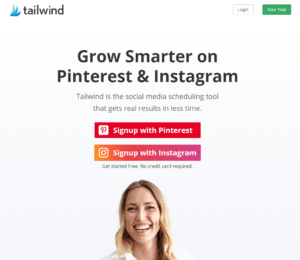7 Tips for Writing Compelling Headlines That Your Audience Can’t Resist

What is the absolute most important piece of any content you create? It’s not the call to action, the keywords, or even the overall premise of the piece.
It’s the headline.
Around 80% of people will read your headline. But only 20% will go on to read your article.
Think of it this way: the headline is the gate that every member of your audience has to pass through in order to interact with your content. If your gate isn’t appealing, no one will bother to pass through, and your content can’t do its job.
So here are some tips you can apply to your headlines right now for a bigger audience and more engagement on your blog posts, articles, and videos.
#1 Focus on the benefits
Copywriters know that it’s not features that sell a product. It’s benefits. In other words, don’t tell people what you’re going to share with them. Tell them how it will make their lives better or solve a problem.
For example, one blog on Copyblogger that’s had thousands of shares and comments is called 37 Tips for Writing Emails that Get Opened, Read, and Clicked. This highlights an immediate benefit to the reader: getting better results out of their email marketing. Always try to think of what problem your content is solving for the audience, and highlight it in your headline.
#2 Make a promise and then deliver
If you want to make an audacious promise, you have to deliver. An article called How to Make $100,000 in One Day is never going to be able to deliver on that promise. But an article called How to Grow Your Business By 20% Over the Next Year may.
Making a promise in your headline and not delivering is clickbait. We’ve all made the mistake of clicking on something that sounds intriguing like, 8 Amazing Things You Never New About [Beloved Celebrity]. We’re then disappointed to find out that each item on the list is either common knowledge or on Wikipedia. It’s a surefire way to lose the trust of your audience.
Also, keep an eye out for terms like “ultimate” or “definitive.” If your Ultimate Guide to Fly Fishing is really more of an introduction to fly fishing, readers will feel cheated by your misleading headline. So make sure your headline accurately describes the content of the piece.
#3 Use the “curiosity gap”
The “curiosity gap” is just a fancy term for the space between what people know and what they want to know. We all remember overzealous headlines from sites like Upworthy and Buzzfeed that used to shout “You’ll never guess what happened next!” They abused the curiosity gap. But it can still be used in a more subtle way.
How One Stupid Tweet Blew Up Justine Sacco’s Life from the New York Times is a great example. It piques your curiosity — how can one dumb tweet ruin someone’s life?
To use it effectively, make you’re still being clear about the topic of the content. Check out this old Upworthy headline, for example: His first 4 sentences are interesting. The 5th blew my mind. And made me a little sick. It misses the mark because you have no idea what the article is about. And that leads to my next tip…

#4 Don’t sacrifice clarity for cleverness
Writers love to show people how clever they are. It’s one of our all-time favorite things. And if you’re not careful, it can seriously backfire.
Good headlines are easy to understand and tell us exactly what’s coming next. So if you’re trying to shoehorn a pun or clever reference into your headline, it may turn your audience off.
Here’s an example from Bloomberg: Shark Oil for HIV Shot Takes Cue From Hemingway’s Old Man.
What?
It turns out that the article is referring to Ernest Hemingway’s The Old Man and the Sea. In the book, the fisherman took shark liver oil to stay healthy. And the writer uses that reference as the lead into an article about a drugmaker that was testing the efficacy of shark oil in an AIDS vaccine. After reading the article, the headline makes sense. But the purpose of your headline is to get the reader to keep reading or watching. It’s not supposed to be a puzzle to solve.
#5 Use numbers
There’s a reason why the “listicle” is so popular. The format of a numbered list is predictable and easy to follow. If you promise your readers 107 Tips for Increasing Widget Sales, they know to settle in for a nice long list. On the other hand, 5 Tips for Increasing Widget Sales will be shorter and may provide more detail in each tip.
Headlines with numbers are preferred by 36% of readers. They can be used to list secrets, types, problems, or tips. You can also do the list in reverse. Instead of listing ways to create a better outcome, try a list of ways people might be making a mistake, like 7 Ways You May Be Sabotaging Your Workouts.
This doesn’t only work in list-type content. If your blog is a story or a how-to, is there an impressive percentage or dollar amount that you can fit into your headline? A title like The Small Mistake That Cost My Business $182,000 can pique curiosity (tip #3!) and attract a lot of readers.
#6 Learn from others

If you’re creating a lot of content, you’re going to need headlines on a weekly or even daily basis. So keep an eye out for headlines that have worked on you, both online and in the real world.
Keep a swipe file of intriguing articles. Evernote is a great place to do this. You can save articles you find online, and add photos that you take while you’re out and about. Next time you’re in line at the grocery store, flip through a magazine and see if there’s anything that draws you in.
Next time you’re stuck, browse your swipe file and see if there are some ideas you can repurpose (never steal!) to fit your content.
#7 Write a bunch and pick the best
All the headline-writing experts agree — the way to hit the headline jackpot is to play the headline lottery. You should be writing 20 to 25 headlines for every piece of content you create.
Most will be fine. Some will be terrible. But somewhere in that superabundance of headlines will be one or two gems that really hit the mark. Writing headlines, like anything else, gets better with practice. So don’t take any shortcuts.
Too Important to Ignore
Many bloggers spend all their time creating content and treat the headline as an afterthought. It should really be the other way around. Dedicate plenty of time to coming up with headline options. If you have the option, do some A/B testing of different headlines to see what performs best before you hit Publish.
One little tweak could be the difference between a headline that goes viral and one that falls flat.






